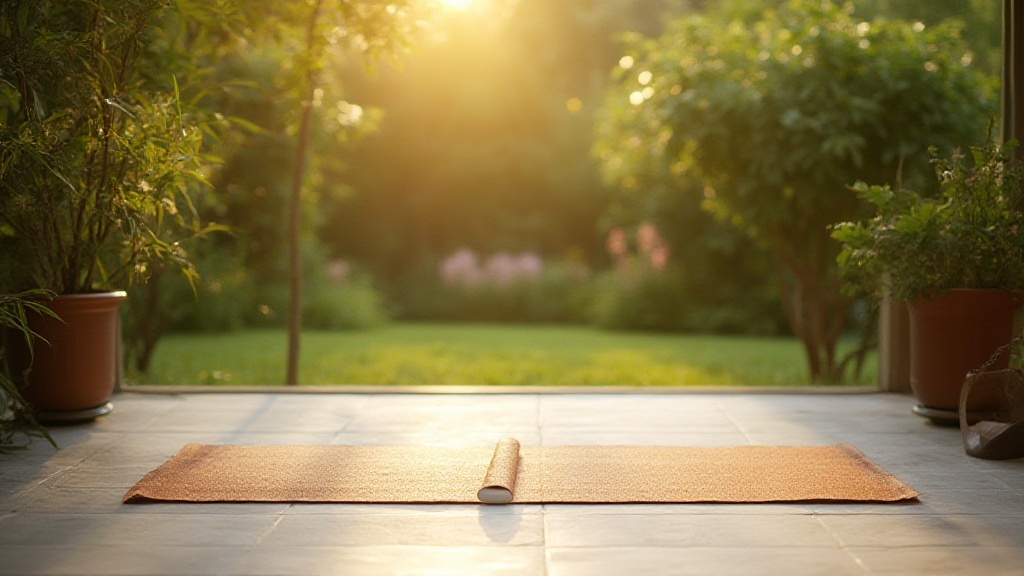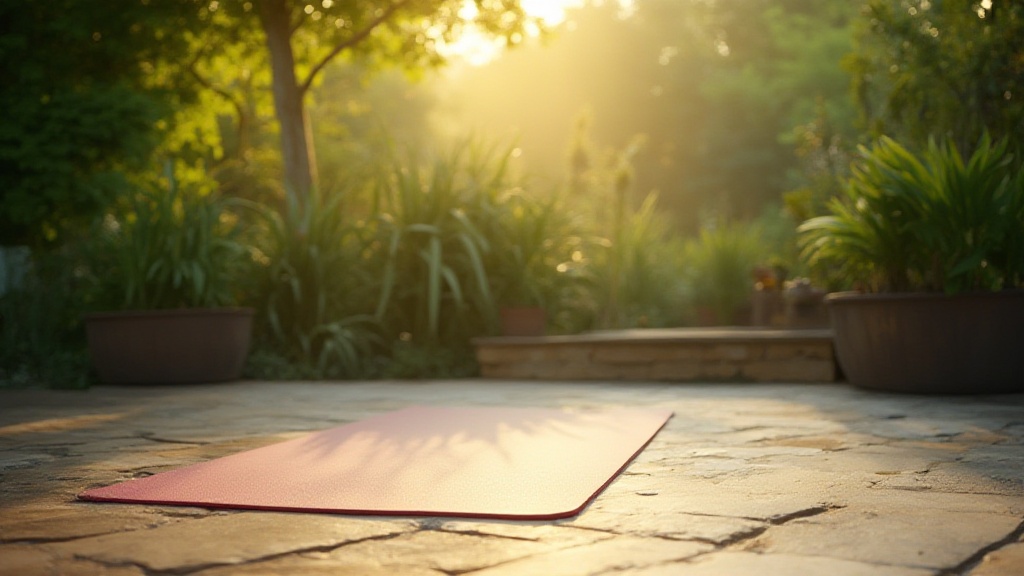
As the day winds down, engaging in evening stretching can serve as a perfect way to relax and unwind. Prioritizing relaxation is essential for overall wellness, particularly in our fast-paced lives.
This article explores various stretches designed to enhance muscle recovery and promote evening calm.
Evening stretching aids in tension release and significantly contributes to your overall health.
By incorporating these gentle movements into your nightly routine, you can improve both your physical well-being and mental clarity, paving the way for a more restful night’s sleep.
Benefits Of Evening Stretching
Engaging in evening stretching delivers notable health benefits, particularly in enhancing sleep quality. Research consistently indicates that individuals who engage in stretching before bed experience a more restful sleep, allowing for deep relaxation.
Reducing muscle tension accumulated throughout the day proves essential for those leading sedentary lifestyles. Stretching serves as an effective method to alleviate this tension, thereby improving daily performance.
Enhancing Sleep Quality
Improving sleep quality is a primary benefit of evening stretching.
Incorporating stretching routines into your evening ritual can facilitate deep relaxation.
Practicing gentle movements right before bedtime prepares both the mind and body for sleep, encouraging a smooth transition into slumber.
Reducing Muscle Tension
Reducing muscle tension is crucial for overall physical wellness.
Evening stretching effectively combats muscle tightness that builds up during the day. Engaging in a recovery routine that includes soft stretches can alleviate discomfort and contribute to improved flexibility.
Practical Tips for Incorporation
Incorporating evening stretching into your night routine can be simple.
Establishing a 15-minute nightly ritual allows for a significant difference in how you feel. Create a calming environment with dim lighting and soothing music to enhance your stretching experience and encourage mindfulness practices.

How To Improve Flexibility
Improving flexibility can significantly enhance overall physical health and performance. Enhanced flexibility not only reduces the risk of injuries but also boosts athletic performance.
Effective stretching routines are essential for alleviating discomfort caused by tight muscles, which contributes to better posture.
Key stretches to incorporate include:.
- Hamstring Stretch: This stretch focuses on softening tight hamstrings to enhance mobility and reduce muscle soreness.
- Hip Flexor Stretch: Opening tight hip flexors is essential for improved range of motion and better posture improvement.
Establishing a consistent training schedule is important; ideally, integrate flexibility exercises into your evening routine. Practicing stretching routines regularly will maximize health benefits and promote overall wellbeing throughout the body, enhancing recovery and muscle recovery.
Relaxation Techniques For Better Sleep
Implementing relaxation techniques can significantly improve the quality of your sleep. Methods such as progressive muscle relaxation help facilitate tension release throughout the body, while guided imagery fosters a calm mindset essential for sleep onset. Creating a calming environment is important; maintain your bedroom in a dark, quiet, and cool state to facilitate deep relaxation. Incorporating gentle movements as part of your evening routine can further promote relaxation and prepare your body for restful sleep.
Progressive Muscle Relaxation
Progressive muscle relaxation involves systematically tensing and relaxing various muscle groups, which promotes effective tension alleviation. This process can lead to deep muscle release and an overall sense of calm.
Guided Imagery
Guided imagery allows individuals to visualize peaceful scenes, which can effectively reduce stress levels and promote mindfulness. This method encourages mental alignment and tranquility, fostering better sleep.
Creating a Calming Environment
To create a calming environment, focus on eliminating distractions and using soothing colors in your bedroom decor. Incorporate low-impact movements and mindful breathing exercises as part of your nightly rituals to improve your sleep onset.
Flexibility and Relaxation Techniques
- Regular stretching can increase flexibility by up to 30% over time, improving overall physical performance.
- Studies show that progressive muscle relaxation can reduce anxiety levels by 20-30%, leading to better sleep quality.
- Creating a calming environment can improve sleep onset time by approximately 15 minutes, enhancing overall sleep duration.
- Incorporating mindfulness practices, such as guided imagery, has been found to decrease stress levels significantly, promoting relaxation.
Muscle Recovery With Gentle Movements
Integrating gentle movements plays a significant role in enhancing muscle recovery following exercise. These low-impact movements promote blood circulation, essential for delivering nutrients and accelerating healing.
Activities such as walking stimulate recovery; a short, brisk walk helps alleviate muscle soreness.
Yoga contributes to relaxation, utilizing gentle poses like Child’s Pose, which fosters flexibility and reduces tension.
Furthermore, swimming incorporates water resistance, providing a soothing environment for your joints. To optimize recovery, integrate these movements within 30 minutes post-workout and utilize rest days to maintain mobility without straining muscles.
Prioritizing these gentle movements enhances overall recovery outcomes.
Benefits of Gentle Movements
Gentle movements not only aid muscle recovery but also improve overall wellbeing. They help in tension release and promote a sense of relaxation, making them a beneficial addition to any recovery routine.
Incorporating mindful breathing during these movements further enhances deep relaxation and promotes a calm state, beneficial for both body and mind.
This holistic approach results in improved mobility and posture improvement.
What Are Effective Stretching Routines
Implementing effective stretching routines is vital for maintaining flexibility and enhancing overall muscle health.
Static stretching involves holding specific stretches, such as hamstring and quadriceps stretches, for 20-30 seconds, significantly improving flexibility.
Dynamic stretching incorporates movements like leg swings and arm circles, preparing muscles for activity while decreasing the risk of injury. Consistent practice is essential; aim to perform these routines at least three times weekly for noticeable improvements.
Types of Stretching Techniques
Flexibility exercises can be adapted to suit various fitness levels. Beginners may start with basic stretches, while more experienced individuals can incorporate deeper stretches for greater benefits.
By tailoring your routine according to your needs, you maximize the potential of your stretching routines.
Tips for Consistent Practice
To see optimal results, develop a regular stretching schedule that you can integrate seamlessly into your existing workouts.
Utilizing stretching props can further enhance your practice, providing support and improving your alignment.
Consistently focusing on soft stretches and deep muscle release fosters a greater sense of physical wellness and contributes to effective tension management.
Supporting Facts on Muscle Recovery and Stretching
- Gentle movements can increase blood circulation, which is crucial for nutrient delivery and healing post-exercise.
- Studies show that static stretching can improve flexibility by holding stretches for 20-30 seconds.
- Dynamic stretching reduces injury risk by preparing muscles for activity through movement-based exercises.
- Incorporating mindful breathing during gentle movements enhances relaxation and overall wellbeing.
Nightly Rituals For Stress Relief
Integrating nightly rituals into your routine can profoundly enhance mental health and overall well-being. These practices promote relaxation and serve as a foundation for improved mental state.
Activities such as gentle movements and mindful journaling can be easily incorporated into your evening routine, effectively inducing a sense of calm before sleep.
- Evening Stretching: Engaging in soft stretches significantly contributes to muscle recovery while preparing the body for rest.
- Mindful Journaling: Writing thoughts down helps declutter the mind, facilitating mental clarity and emotional stability.
- Herbal Tea: Consuming caffeine-free tea signals the body to unwind, thereby enhancing relaxation.
Consistency with these nightly rituals cultivates a calming night routine, which ultimately enhances stress relief and promotes overall mental health.
Mindful Breathing And Unwind Practices
Incorporating mindful breathing techniques is essential for alleviating stress and enhancing relaxation. These methods can be easily executed at home, making them accessible for everyone. Simple practices, such as diaphragmatic breathing and the 4-7-8 technique, effectively promote calmness before bedtime.
- Diaphragmatic Breathing: Focus on deep inhalations to engage the diaphragm, resulting in lower heart rates and reduced muscle tension.
- 4-7-8 Breathing: Inhale for four counts, hold for seven, and exhale for eight to enhance relaxation.
Establishing a peaceful breathing space enhances the experience, encouraging a consistent practice that contributes to physical wellness and emotional balance.
- Regular stretching can improve flexibility and reduce the risk of injury.
- Mindful journaling has been shown to decrease anxiety and improve mood.
- Herbal teas, such as chamomile and lavender, are known for their calming effects and can aid in sleep quality.
- Mindful breathing techniques can lower cortisol levels, which helps in managing stress effectively.
Calming Exercises For Evening Routine
Incorporating calming exercises into your evening routine significantly enhances sleep quality. Gentle movements, such as stretching or mindful breathing, serve to unwind both the body and mind, establishing a peaceful scene for rest.
Evening relaxation routines play an essential role in reducing stress, especially through techniques like deep breathing and soothing stretches.
These exercises help lower cortisol levels, allowing your body to transition smoothly into sleep mode.
“A peaceful evening routine can significantly contribute to improved sleep quality. ”
Physical Exercises for Better Sleep
Stretching routines are an effective way to unwind, promoting relaxation and flexibility.
Engaging in soft stretches for major muscle groups can alleviate muscle tension and enhance mobility. Integrating low-impact movements, such as gentle yoga poses, not only aids in muscle recovery but also enhances posture.
Utilizing stretching props, like yoga blocks or straps, can assist in achieving better alignment and deep muscle release. Regularly performing these movements creates a foundation for nightly rituals that promote a restorative night’s sleep.
Mental Exercises for Evening Calm
Mindfulness meditation constitutes a key element of calming exercises.
This practice encourages a state of deep relaxation, allowing individuals to focus on their breath and the present moment.
Engaging in breath work, such as deep breathing exercises, can help manage racing thoughts and anxiety.
Incorporating reflective practices before bedtime fosters a sense of peace, making it easier to unwind. Together, these mindfulness techniques also encourage emotional well-being, contributing to a stable mood and restful sleep.
“Mindfulness practices enhance the ability to cope with daily stress and promote well-being. ”
Creating a Serene Atmosphere
To further enhance your evening routine, establishing a serene environment is crucial.
Reducing ambient light can help signal to your body that it is time to wind down. Soft music or nature sounds can create a tranquil backdrop that promotes relaxation.
Maintaining a comfortable temperature in your space will contribute to a sense of ease.
Together, these elements align harmoniously to facilitate an effective wind-down period.
By integrating calming exercises and creating an inviting atmosphere, individuals can effectively manage tension and prepare for restorative sleep.
These nightly practices not only improve physical wellness but also enhance overall mental health, creating a holistic approach to well-being.
Calming Exercises for Sleep
- Studies show that stretching before bed can improve sleep quality by reducing muscle tension.
- Mindfulness meditation has been linked to lower levels of anxiety and stress, contributing to better sleep.
- Creating a calm environment with soft lighting and soothing sounds can help signal to the body that it’s time to relax.
- Engaging in deep breathing exercises can lower cortisol levels, facilitating a smoother transition to sleep.
